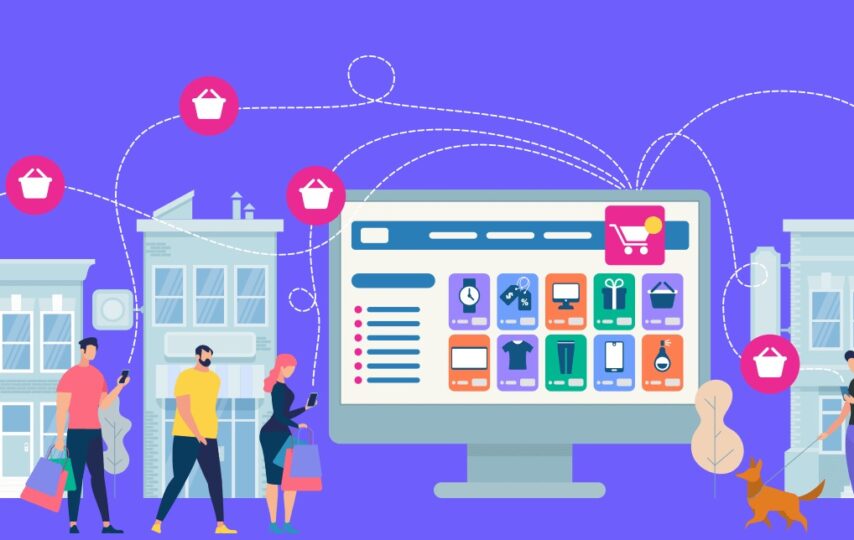Strategies for Delivering Customized Shopping Experiences
As e-commerce continues to grow and evolve, businesses are increasingly focused on delivering personalized and customized shopping experiences to their customers. E-commerce site development involves personalization by tailoring products, recommendations, and marketing communications to individual customer preferences and needs. E-commerce customization involves allowing customers to personalize their own shopping experiences through options such as product configurations, personalized packaging, and custom orders. In this blog post, we’ll explore the importance of both e-commerce personalization and customization, and provide some tips and best practices for how businesses can implement these strategies.
The Importance of E-commerce Personalization
Personalization is becoming a key factor in customer satisfaction and is often cited as a major driver of loyalty and repeat business. Personalized product recommendations have been shown to increase the likelihood of a sale by 50%, and 80% of consumers are more likely to do business with a company that offers personalized experiences. E-commerce personalization also helps businesses to stand out from the competition, by creating a unique and memorable shopping experience that sets them apart.
Tips and Best Practices for E-commerce Personalization
1. Collect and Use Customer Data
The first step in e-commerce site development is delivering personalized shopping experiences is to collect data on your customers, such as their browsing history, purchase history, and demographic information. This data can then be used to make product recommendations and create targeted marketing campaigns. However, it’s important to be transparent about how you collect and use customer data and to ensure that you comply with data privacy regulations such as GDPR and CCPA.
2. Use Product Recommendations
Product recommendations are one of the most effective ways to personalize the shopping experience. By analyzing customer data, businesses can suggest products that are likely to be of interest to each individual customer. Product recommendations can be displayed on the homepage, product pages, and in emails and other marketing communications. It’s important to ensure that product recommendations are relevant and not too intrusive, as customers may be put off by overly aggressive sales tactics.
3. Personalize the Homepage
The homepage is often the first point of contact between a customer and an e-commerce site, so it’s important to make a good impression. Personalizing the e-commerce site development can help to create a more welcoming and engaging experience for each customer. You can easily hire experienced ecommerce developers online with CV Infotech. This can include displaying recently viewed products, recommended products, personalized promotions, and, discounts. It’s also important to ensure that the homepage is easy to navigate and visually appealing, encouraging customers to explore the site further.
4. Use Dynamic Pricing
Dynamic pricing is a technique where prices are adjusted based on factors such as demand, inventory levels, and customer behavior. This can help to create a more personalized pricing experience for each customer, by offering discounts and promotions that are tailored to their individual needs and preferences. However, it’s important to ensure that dynamic pricing is used ethically and transparently and that customers are not misled or taken advantage of.
5. Offer Personalized Discounts and Promotions
Personalized discounts and promotions can be a powerful way to encourage customers to make a purchase. By analyzing customer data, businesses can offer discounts and promotions that are tailored to each customer’s individual needs and preferences. For example, a customer who frequently purchases a particular type of product could be offered a discount on that product, or a customer who has not made a purchase in a while could be offered a special promotion to encourage them to return to the site.
The Importance of E-commerce Customization
E-commerce customization involves allowing customers to personalize their own shopping experiences through options such as product configurations, personalized packaging, and custom orders. This can help to create a sense of ownership and investment in the purchase, and can also be a key differentiator for businesses in crowded markets.
Tips and Best Practices for E-commerce Customization
1. Offer Product Configurations
E commerce site development configurations allow customers to customize products to their own preferences, such as choosing different colors, materials, or sizes. This can help to create a more personalized and engaging shopping experience, and can also help to reduce the number of returns and exchanges. It’s important to ensure that product configurations are easy to use and understand and that customers have access to clear product descriptions and images to help them make informed decisions.
2. Offer Personalized Packaging
Personalized packaging is a way to add an extra level of customization to the shopping experience. This can include options such as custom wrapping paper, personalized messages, or branded packaging. Personalized packaging can help to create a sense of excitement and anticipation around the purchase, and can also be a way to encourage customers to share their purchases on social media.
3. Offer Custom Orders
Custom orders allow customers to create products that are tailored to their individual needs and preferences. This can be particularly valuable for customers who have specific requirements that are not met by off-the-shelf products. Custom orders can also be a way to create a sense of exclusivity and uniqueness around the product, which can help to drive customer loyalty and repeat business.
Conclusion
E-commerce personalization and customization are two powerful strategies for creating engaging and customized shopping experiences that drive customer loyalty and repeat business. By collecting and using customer data, offering personalized product recommendations, personalizing the homepage, using dynamic pricing, and offering personalized discounts and promotions, businesses can create a more engaging and personalized shopping experience that drives loyalty and repeat business. In addition, by offering product configurations, personalized packaging, and custom orders, businesses can allow customers to personalize their own shopping experiences and create a sense of ownership and investment in the purchase. However, it’s important to use personalization and customization strategies ethically, transparently, and in a way that enhances the shopping experience, rather than detracting from it.





